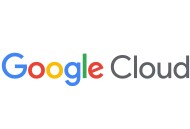
Google Cloud results
- Bidirectional, real-time translation through virtual agents now provides access to serve 67% of Minnesota's non-English speaking population
- Customers can check plate status, title status, mark vehicles as sold/donated/removed, update insurance, and check license status
Challenge: Language barriers are a challenge for residents when accessing services
In a 2022 survey of US states, Minnesota ranked 19th for the highest number of resettled refugees and first for secondary migration, making it a highly diverse state. The Minnesota Department of Education revealed that over 334 different languages are spoken within the state. In all, over 10% of Minnesotans are non-native English speakers, a barrier when accessing civic services.
The Minnesota Department of Public Safety (DPS) identified the need to enhance language accessibility in the department when residents need a driver's license through Driver & Vehicle Services (DVS).
"Applying for a REAL ID-compliant driver's license can be a complex process for anybody. It's made even more difficult for the underserved, non-English speaking population," says Minnesota DPS Assistant Commissioner Timothy Lynaugh.
Historically non-English speaking residents needed to schedule in-person appointments and request translation assistance, or bring someone with them who could help communicate with officials.
Minnesota Governor Tim Walz champions a 'One Minnesota' drive for better Diversity, Equity, and Inclusion in the state, solving the challenges of accessibility is a key part of that journey.
Solution: Providing real-time translation through Translation AI to improve access to government services
DVS wants to better serve its community. It started that process by improving access to its online support services and documentation. The department chose to work with Google Cloud to explore language translation services. They are excited to continue to explore leveraging the technology to provide translation real-time for their customers.
This solution was born from a real community need to serve a significant population of our state. It will expand and improve over time to make Minnesota a more inclusive and equitable state for all its constituents.
Timothy Lynaugh, Assistant Commissioner at the Minnesota Department of Public Safety (DPS)
Results: Thousands more residents served with greater access
With Spanish, Somali, and Hmong in place, DVS intends to deliver improved self-service access to 67% of non-English speakers in the state. Minnesotans will be able to more easily access information about DVS services, helping customers obtain driver's licenses and IDs that are required by the state.
DVS explored ideal practices to support chat, text, and forms through virtual agents, and determined options for VoiceBot and Telephony support to further modernize access to services for non-English speakers.
We want to be available whenever people need us and whenever it's most convenient for them, whether it's at 6 a.m. after they get done with work or during a short break in the middle of the day.
Pong Xiong, Driver & Vehicle Services Director
By partnering with Google Cloud, the platform that underpins these virtual agents has been designed as a complete system to scale toward the future needs of the state of Minnesota.
Digital transformation to deliver a "One Minnesota" mission
At launch, the virtual agent service was designed to deliver the top four languages spoken by Minnesotans. DVS's roadmap plans to expand from four to 30 languages. The focus is on languages that have the greatest need according to population size. DVS is looking to add Afghan and Ukrainian based on community input, and intends to support more of the 334+ languages spoken in the state.
DVS's successes highlight the potential use of Google language solutions across Minnesota. It also offers an example to other states of how digital transformation can provide greater access to the government for all residents. With hundreds of thousands of non-English speaking residents given more equitable access to license and identification services, it delivers a tangible step forward in the state's ongoing "One Minnesota" mission.








